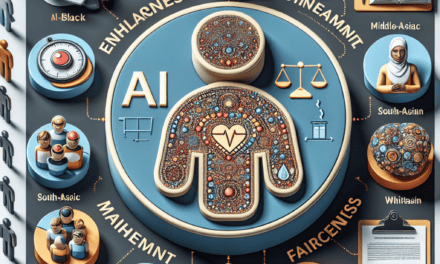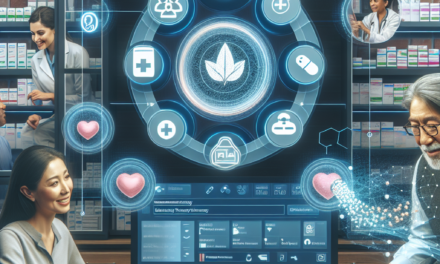The Rising Need for Physiotherapy in Burlington: A Look at Cutting-Edge Treatments and Technologies
As the population of Burlington continues to grow and age, the demand for physiotherapy services is on the rise. Physiotherapy plays a crucial role in rehabilitation, pain management, and overall health improvement. With advancements in technology and treatment methodologies, physiotherapy is evolving to meet the needs of patients more effectively. This article explores the increasing need for physiotherapy in Burlington, focusing on cutting-edge treatments and technologies that are shaping the future of this essential healthcare service.
1. Understanding the Growing Demand for Physiotherapy
The demand for physiotherapy services in Burlington is influenced by several factors, including demographic changes, lifestyle choices, and the increasing prevalence of chronic conditions. As the population ages, the incidence of musculoskeletal disorders, neurological conditions, and other health issues requiring physiotherapy is expected to rise.
According to Statistics Canada, the population of Burlington is projected to grow significantly over the next decade, with a notable increase in the number of seniors. This demographic shift is critical as older adults often experience a higher incidence of conditions such as arthritis, osteoporosis, and post-surgical recovery needs. Physiotherapy is essential for managing these conditions, helping patients regain mobility and improve their quality of life.
Moreover, lifestyle factors such as sedentary behavior, obesity, and stress-related disorders are contributing to an increase in musculoskeletal injuries and chronic pain conditions. The World Health Organization (WHO) reports that physical inactivity is one of the leading risk factors for global mortality, emphasizing the need for effective interventions like physiotherapy.
- Demographic Changes: The aging population in Burlington is leading to a higher demand for physiotherapy services.
- Lifestyle Factors: Sedentary lifestyles and obesity are contributing to an increase in musculoskeletal disorders.
- Chronic Conditions: The prevalence of chronic pain and other health issues necessitates physiotherapy interventions.
- Increased Awareness: There is a growing awareness of the benefits of physiotherapy among the general public.
- Healthcare Integration: Physiotherapy is increasingly recognized as a vital component of comprehensive healthcare.
2. Innovative Treatment Modalities in Physiotherapy
As the field of physiotherapy evolves, new treatment modalities are being developed to enhance patient outcomes. These innovative approaches are designed to address a wide range of conditions and improve the overall effectiveness of physiotherapy.
One of the most significant advancements in physiotherapy is the use of manual therapy techniques. Manual therapy involves hands-on techniques to manipulate muscles and joints, providing relief from pain and improving mobility. Techniques such as myofascial release, joint mobilization, and soft tissue mobilization are gaining popularity among physiotherapists in Burlington.
Another innovative treatment modality is the use of therapeutic ultrasound. This technique utilizes sound waves to promote tissue healing and reduce inflammation. Therapeutic ultrasound can be particularly effective for conditions such as tendonitis, bursitis, and muscle strains. Research has shown that ultrasound therapy can significantly reduce pain and improve function in patients with these conditions.
Additionally, dry needling has emerged as a popular treatment option for myofascial pain syndrome. This technique involves inserting thin needles into trigger points in the muscles to relieve pain and improve function. Studies have demonstrated that dry needling can lead to significant reductions in pain and improvements in range of motion.
- Manual Therapy: Hands-on techniques to manipulate muscles and joints.
- Therapeutic Ultrasound: Uses sound waves to promote healing and reduce inflammation.
- Dry Needling: Involves inserting needles into trigger points to relieve pain.
- Electrical Stimulation: Uses electrical currents to stimulate muscles and reduce pain.
- Hydrotherapy: Utilizes water for therapeutic purposes, aiding in rehabilitation.
3. The Role of Technology in Modern Physiotherapy
Technology is playing an increasingly important role in the field of physiotherapy, enhancing treatment options and improving patient outcomes. From telehealth services to advanced rehabilitation equipment, technology is transforming how physiotherapists deliver care.
Telehealth has gained significant traction, especially in the wake of the COVID-19 pandemic. Many physiotherapy clinics in Burlington have adopted telehealth platforms to provide virtual consultations and follow-up appointments. This approach allows patients to receive care from the comfort of their homes, making physiotherapy more accessible, especially for those with mobility issues or those living in remote areas.
Wearable technology is another exciting development in physiotherapy. Devices such as smartwatches and fitness trackers can monitor patients’ physical activity levels, heart rate, and other vital signs. Physiotherapists can use this data to tailor treatment plans and track progress over time. For example, a physiotherapist may recommend specific exercises based on a patient’s activity levels recorded by a wearable device.
Moreover, advanced rehabilitation equipment, such as robotic exoskeletons and virtual reality (VR) systems, is revolutionizing the rehabilitation process. Robotic exoskeletons assist patients with mobility impairments, allowing them to regain independence and improve their walking ability. VR systems provide immersive environments for rehabilitation exercises, making therapy more engaging and effective.
- Telehealth: Virtual consultations and follow-ups for increased accessibility.
- Wearable Technology: Devices that monitor activity levels and vital signs.
- Robotic Exoskeletons: Assistive devices for patients with mobility impairments.
- Virtual Reality: Immersive environments for engaging rehabilitation exercises.
- Mobile Apps: Applications that provide exercise programs and track progress.
4. Case Studies: Success Stories in Physiotherapy
Real-life case studies provide valuable insights into the effectiveness of physiotherapy treatments and the impact they have on patients’ lives. In Burlington, several success stories highlight the transformative power of physiotherapy.
One notable case involves a 65-year-old woman who underwent hip replacement surgery. Post-surgery, she experienced significant pain and limited mobility. After a comprehensive assessment, her physiotherapist developed a personalized rehabilitation program that included manual therapy, therapeutic exercises, and education on pain management strategies. Over the course of several weeks, the patient reported a substantial reduction in pain and regained her ability to walk independently.
Another inspiring case is that of a young athlete who suffered a severe ankle sprain during a soccer match. The athlete was determined to return to the field as quickly as possible. Her physiotherapist implemented a combination of manual therapy, ultrasound treatment, and a progressive exercise program focused on strength and balance. Within a few weeks, the athlete was able to return to practice, demonstrating the effectiveness of targeted physiotherapy interventions.
These case studies underscore the importance of individualized treatment plans and the role of physiotherapy in facilitating recovery and improving quality of life. They also highlight the need for ongoing research and innovation in the field to continue delivering effective care to patients.
- Hip Replacement Recovery: A case study of a woman regaining mobility post-surgery.
- Sports Injury Rehabilitation: An athlete’s journey back to the field after an ankle sprain.
- Chronic Pain Management: A patient with fibromyalgia finding relief through physiotherapy.
- Post-Stroke Rehabilitation: A stroke survivor improving mobility and independence.
- Pediatric Physiotherapy: A child with developmental delays benefiting from targeted interventions.
5. The Future of Physiotherapy in Burlington
The future of physiotherapy in Burlington looks promising, with ongoing advancements in treatment modalities, technology, and patient care. As the demand for physiotherapy services continues to grow, practitioners are adapting to meet the evolving needs of their patients.
One of the key trends shaping the future of physiotherapy is the emphasis on preventive care. Physiotherapists are increasingly focusing on educating patients about injury prevention and promoting healthy lifestyles. This proactive approach can help reduce the incidence of musculoskeletal injuries and chronic conditions, ultimately leading to better health outcomes for the community.
Additionally, interdisciplinary collaboration is becoming more prevalent in healthcare. Physiotherapists are working closely with other healthcare professionals, such as physicians, occupational therapists, and nutritionists, to provide comprehensive care. This collaborative approach ensures that patients receive holistic treatment that addresses all aspects of their health.
Furthermore, ongoing research and innovation will continue to drive advancements in physiotherapy. As new technologies emerge and treatment methodologies evolve, physiotherapists in Burlington will be well-equipped to provide cutting-edge care to their patients. The integration of artificial intelligence (AI) and machine learning into physiotherapy practice may also enhance treatment planning and patient monitoring.
- Preventive Care: Emphasis on injury prevention and promoting healthy lifestyles.
- Interdisciplinary Collaboration: Working with other healthcare professionals for comprehensive care.
- Research and Innovation: Ongoing advancements in treatment modalities and technologies.
- Artificial Intelligence: Potential integration of AI for enhanced treatment planning.
- Community Engagement: Increasing awareness and access to physiotherapy services.
Conclusion
The rising need for physiotherapy in Burlington is driven by demographic changes, lifestyle factors, and the increasing prevalence of chronic conditions. As the field continues to evolve, innovative treatment modalities and advanced technologies are enhancing patient care and outcomes. Success stories from local patients highlight the transformative power of physiotherapy in improving mobility, managing pain, and facilitating recovery.
Looking ahead, the future of physiotherapy in Burlington is bright, with a focus on preventive care, interdisciplinary collaboration, and ongoing research. As the community continues to recognize the value of physiotherapy, practitioners will be well-positioned to meet the growing demand for services and provide cutting-edge care to their patients.
In summary, physiotherapy is not just a treatment for injuries; it is a vital component of overall health and wellness. As Burlington embraces the advancements in this field, residents can look forward to improved access to high-quality physiotherapy services that enhance their quality of life.





